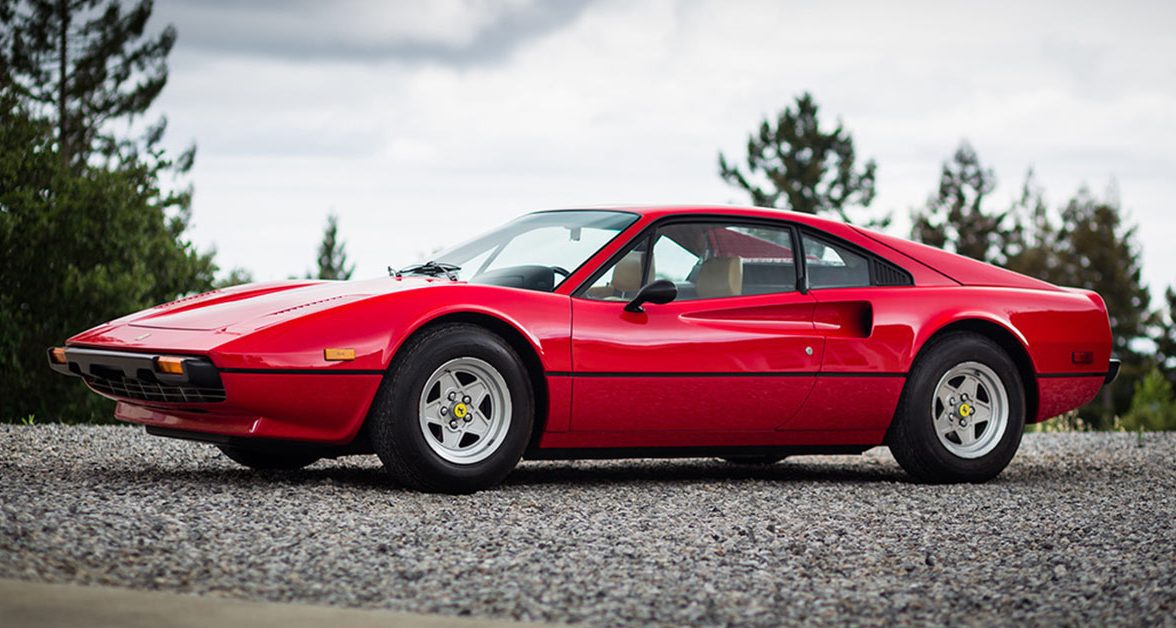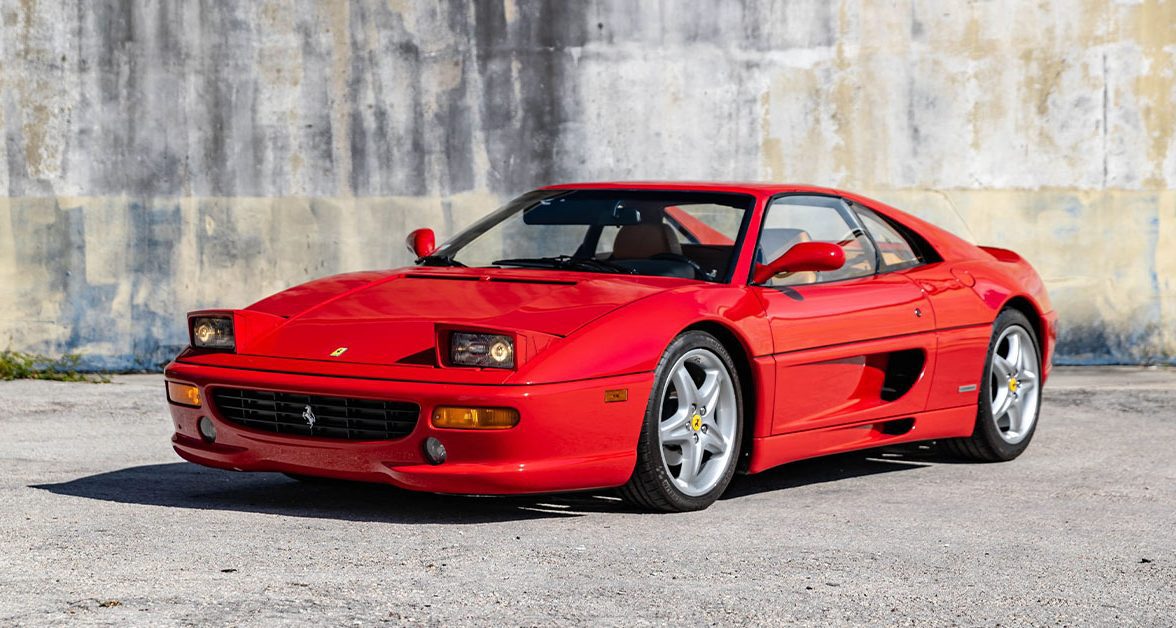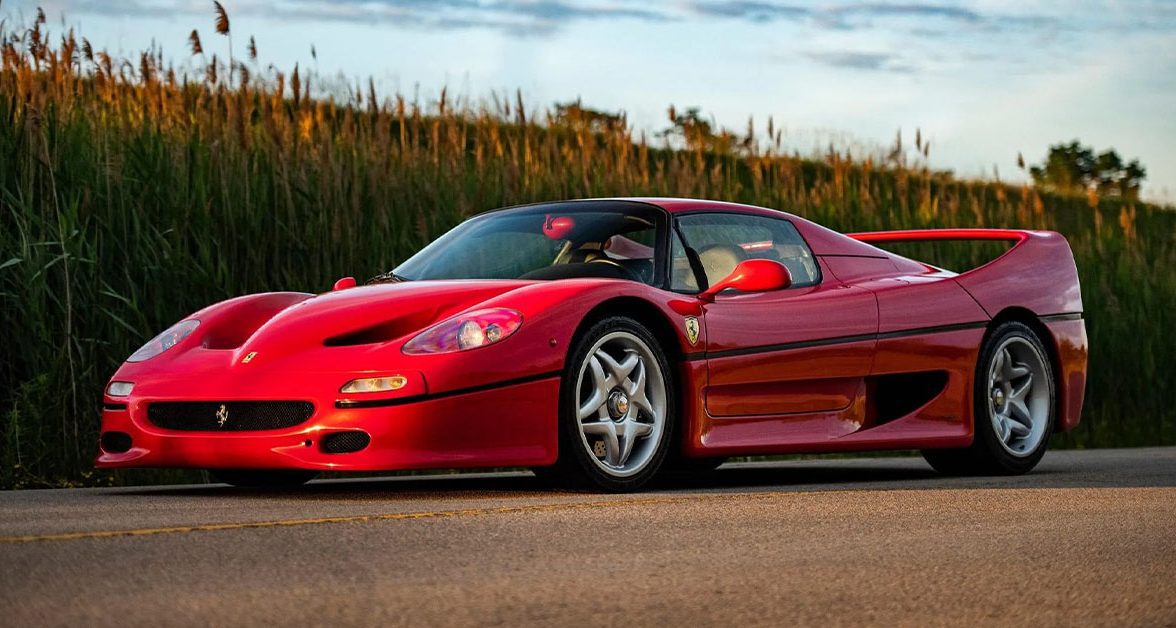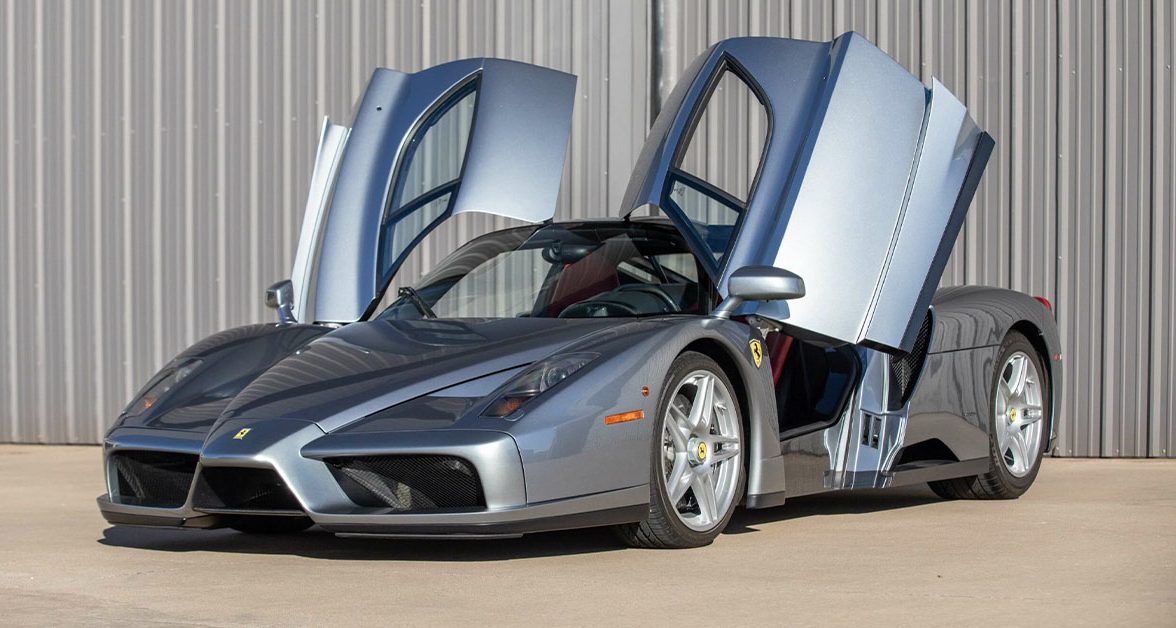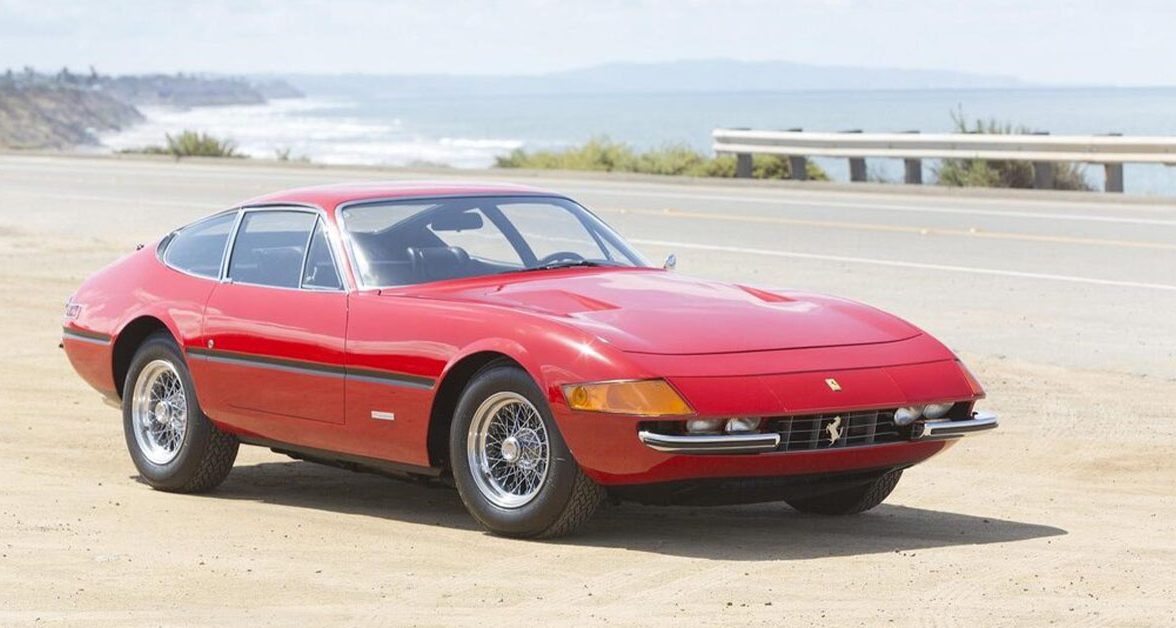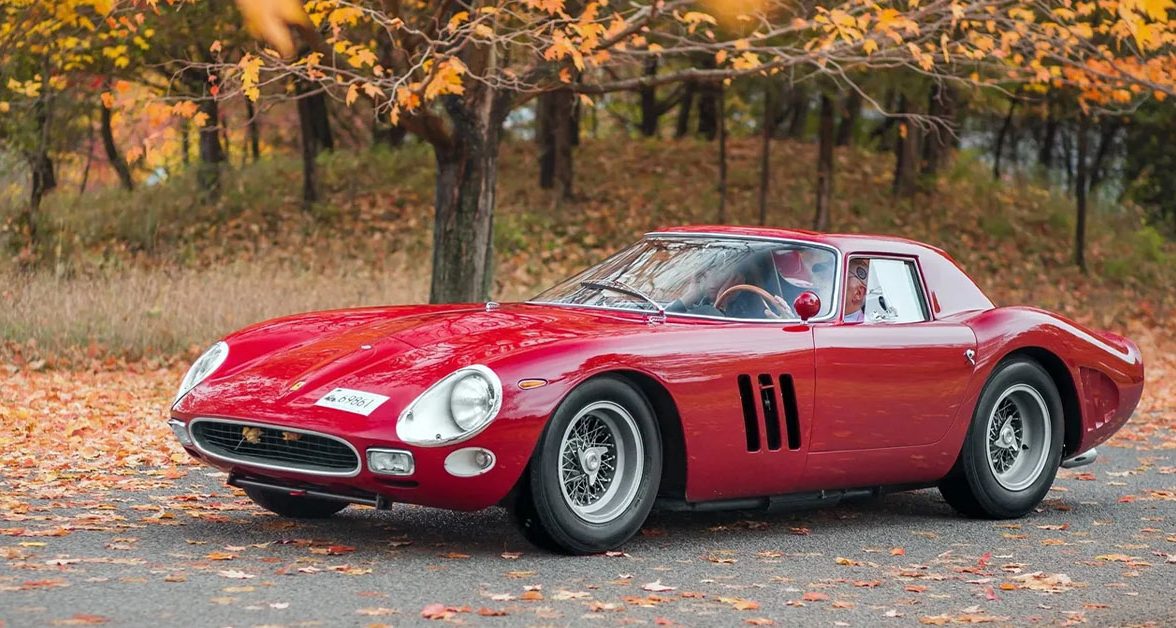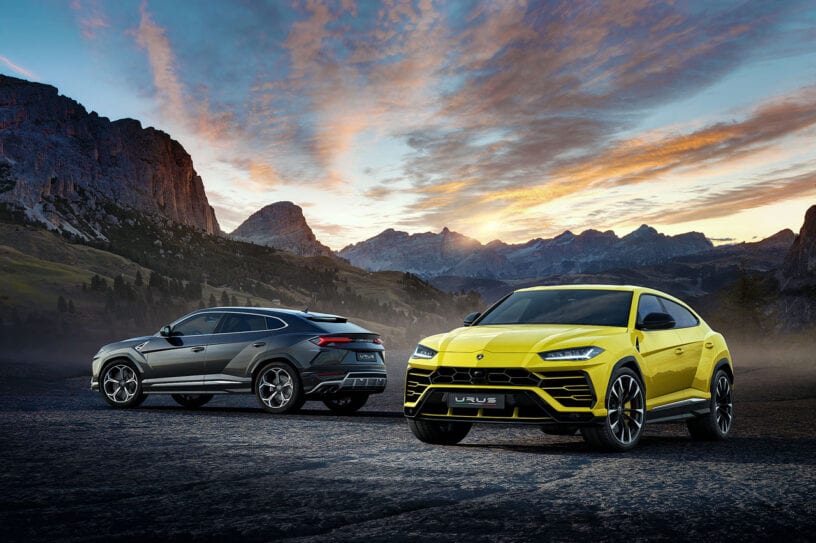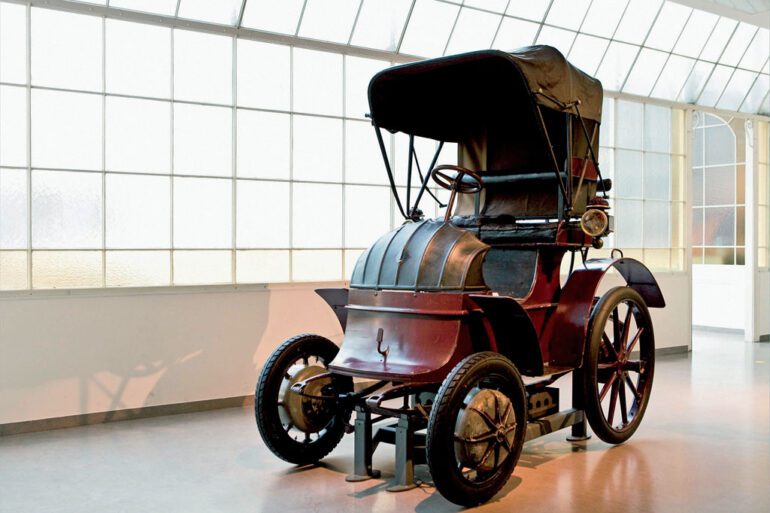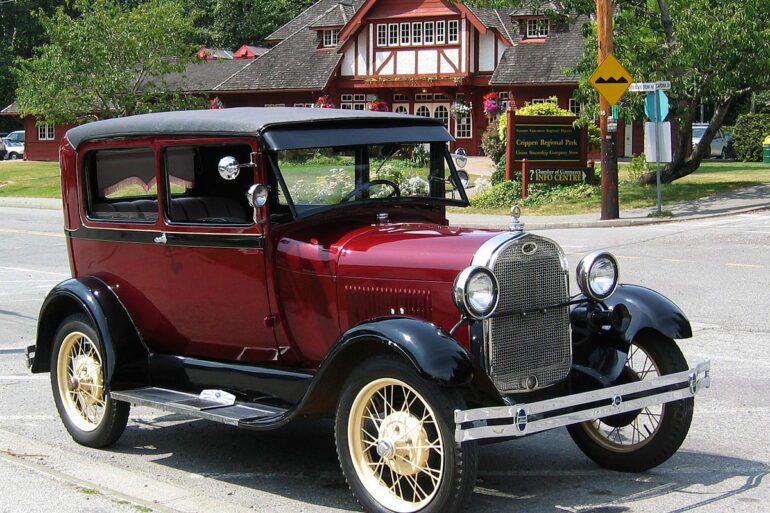The Greatest Ferraris of All Time
Updated September 2023 by Eduardo Zepeda
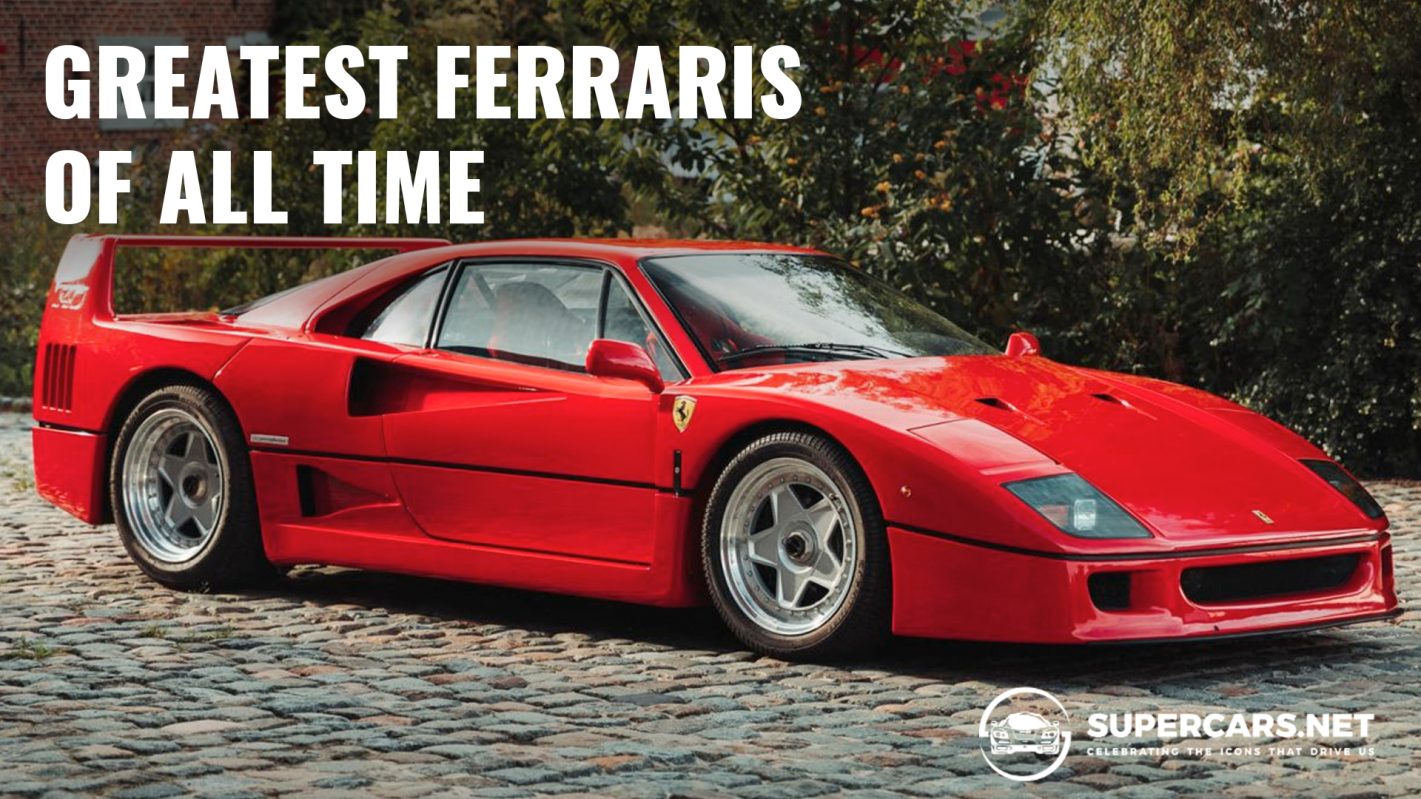
Racing roots and an insatiable thirst for creating legendary cars characterize these Ferraris
About Our Selections
Almost any auto enthusiast would tell you Ferraris set the standard for automotive excellence. The Italian automaker has achieved mythical proportions in the automotive industry.
Ferrari has been the undisputed king of automotive lust for nearly eight decades. Since its founding in 1947, the carmaker from Maranello has produced several cars that have achieved legendary status thanks to its extensive racing history.
Though the prancing horse marque has created many exciting models, these gems have left an everlasting imprint on auto lovers (not just Ferrari fans) worldwide with their unparalleled beauty and performance. Let's take a look at what we consider to be the greatest Ferraris of all time.
Ferrari 308 GTB
A Pininfarina work of art
Why We Picked It:
The 308 GTB's unique design is a result of its famous Ferrari mid-engine arrangement, which, in comparison to front-engine vehicles, offers better weight distribution and handling.
Second, the 308 GTB has a very angular appearance. The steeply sloping roofline enhances its athletic good looks. The third notable feature of the 308 GTB is its body, which is made of sturdy fiberglass. This reduces the vehicle's overall weight, improving its handling.
The remarkable design of the Ferrari 308 GTB is a reflection of Pininfarina's skill and Ferrari's commitment to producing high-performance sports cars with stunning aesthetics. The timeless design, aerodynamic efficiency, and unquestionable air of prestige that characterize a Ferrari on the road keep people coming back.
Leonardo Fioravanti of Pininfarina was in charge of designing the Ferrari 308 GTB. Fioravanti created other famous Ferrari shapes, such as the Daytona, the Dino, and the Berlinetta Boxer.
Specifications:
Price: $40,000-$160,000
Engine: 3.0L V8
Power: 255 hp
Torque: 210 lb-ft
Transmission: 5-Speed Manual
Curb Weight: 2,800 lbs
Highlights:
The 308 GTB, like many Ferraris, features a mid-engine layout, placing the engine behind the driver and enhancing the car's balance, handling, and overall performance.
In addition to these general qualities, the 308 GTB is also notable because of its association with popular culture. Numerous celebrities have driven the car, which appeared in the well-known television program Magnum P.I. from the 1980s.
Learn More:
Ferrari F355 GTS
One of the sexiest Ferraris
Why We Picked It:
In 1995, Ferrari included the GTS version of the F355 in their portfolio. The GTS model was based on the F355 Berlinetta but had a removable "Targa-style" roof.
With the same 40-valve V8, the F355 GTS generated 375 horsepower and 268 pound-feet of torque. All other specifications were also the same for the Berlinetta.
The V8 engine revs to an astonishing 8,250 rpm and produces a powerful sound distinctively Ferrari. Top speed of 183 mph and acceleration from 0 to 62 mph in 4.7 seconds were remarkable.
This Ferrari stands out from the crowd thanks to its eye-catching design, satisfying gated shifter, booming V8 engine, and, let's not forget, those gorgeous pop-up headlights. Its dimensions were virtually those of the 348, but its body had been reworked thanks to wind tunnel tests.
The F355's interior features excellent materials and a gorgeous gated shifter, while the exterior design boasts perfect proportions
Specifications:
Price: $60,000-$300,000
Engine: 4.0L V8
Power: 380 hp
Torque: 268 lb-ft
Transmission: 6-Speed Manual
Curb Weight: 2,976 lbs
Highlights:
The Ferrari F335 was one of the most visually stunning cars of the 1990s, thanks to Pininfarina's design. It boasted a fantastic powertrain with one of the most intoxicating engine sounds in the world.
The F355's low profile and wide stance give the car a sense of power and elegance.
Learn More:
Ferrari F50
The golden Ferrari standard
Why We Picked It:
To commemorate Ferrari's 50th year in business, they created a new iconic supercar that combined beauty and beast: the F50. Like the 288 GTO and F40 before it, its primary focus was on motorsports engineering, with minimal attention paid to the comfort of its occupants.
The F50's solidity was a major selling point. It featured a solidly attached chassis with less rubber in the suspension system and lacked front, rear, and engine subframes. The engine and transmission were also the rear support structure and housed the rear suspension parts, and they were attached directly to the central tub.
A V12 engine displacing 4.7 liters provided power; its output was 512 horsepower and 347 lb-ft of torque sent to rear wheels. The six-speed manual transmission and V12 engine were based on Ferrari's 1990 Formula One car. The F50 had a top speed of almost 200 mph and could reach 60 mph from rest in 3.7 seconds.
Specifications:
Price: $2,000,000-$5,000,000
Engine: 4.7L V12
Power: 512 hp
Torque: 347 lb-ft
Transmission: 6-Speed Manual
Curb Weight: 2,910 lbs
Highlights:
The F50 was made extensively from carbon fiber, which made it very lightweight. This gave it excellent performance and agility.
The F50 featured advanced aerodynamic features, such as a large rear wing and a diffuser. These features helped to keep the car stable at high speeds and to generate downforce.
Learn More:
Ferrari F50 ultimate guide
Ferrari 250 GT California Spyder SWB
La dolce vita
Why We Picked It:
In 1959, Ferrari debuted the shorter 250 GT California Spyder on their stiffer short wheelbase (SWB) chassis. This Ferrari is said to perfectly embody 'la dolce vita,' or the sweet life, because it's one of the greatest motoring experiences. It's one of the most aesthetically pleasing automobiles ever produced by the illustrious Italian automaker. The car was a masterpiece of design and craftsmanship, thanks to the efforts of Pininfarina and Scaglietti.
The earliest Spyders were constructed on the original 2600mm wheelbase, often known as long wheelbase (LWB), before Ferrari launched a 2400mm SWB variant of the 250 GT Berlinetta. At the 1960 Geneva Auto Show, Scaglietti debuted the 250 GT California Spyder SWB. Its body was lengthened over the new chassis.
The updated Spyder featured disc brakes and a 276-horsepower version of the 3.0-liter Colombo Tipo 125 V12 engine, just like the Berlinetta it was built on. The short-wheelbase GT Spyder was produced in a limited run of 56 vehicles and was primarily spotted on the French Riviera and Hollywood.
Specifications:
Price: $16,000,000-$18,000,000
Engine: 3.0L V12
Power: 250 hp
Torque: 181 lb-ft
Transmission: 4-Speed Manual
Curb Weight: 3,040 lbs
Highlights:
The Ferrari 250 California SWB Spyder is unique because it represented the pinnacle of Italian design and performance at the time. It was a beautiful and exciting car to drive.
Today, the Ferrari 250 California SWB Spyder is one of the world's most sought-after and valuable collector cars. It is a truly iconic car, representing a golden era in Ferrari's history.
Learn More:
Ferrari Enzo
The pinnacle of Ferrari
Why We Picked It:
Ferrari's new Gran Turismo, introduced in the early 2000s, took advantage of the company's fifty years of experience while drawing inspiration from Formula One technology. The Enzo, like the 288GTO, F40, and F50 before it, is part of a small run of road cars named after the company's founder. These vehicles are emblematic of Ferrari's aspiration to create the world's most luxurious and cutting-edge automobile.
Ferrari is no stranger to branding race-derived technology on road cars. Ferrari's road and racing cars were essentially the same until the late 1950s. Safety restrictions, production costs, and practicality have created a clear divide between race cars and everyday vehicles. The Enzo was created to close this gap.
As Luca de Montezemolo states, 'To bring together our racing success and the fundamental role of races, I decided that this car, which represents the best our technology is capable of, should be dedicated to the founder of the company, who always thought racing should lay the foundation for our road car designs.' Michael Schumacher and Dario Benuzzi helped test the Enzo.
Specifications:
Price: $2,500,000-$3,000,000
Engine: 6.0L V12
Power: 660 hp
Torque: 485 lb-ft
Transmission: 6-Speed Semi-Automatic
Curb Weight: 3,020 lbs
Highlights:
The Enzo was designed with a focus on handling and agility. It had a lightweight carbon fiber body and a sophisticated suspension system. This made it one of the best-handling cars of its era.
The Enzo is a special car because it represented the pinnacle of Ferrari's engineering and design at the time and resulted from Ferrari's rich legacy in racing translated into a road car.
Learn More:
Ferrari Enzo review
Ferrari 365 GTB/4 Daytona
The last front V12
Why We Picked It:
The 365 GTB/4 was Ferrari's final front-engine V12 from the classic era. It debuted at the 1968 Paris Motor Show and set the standard for fast cars with its top speed of 170 miles per hour.
The 365's V12 was located up front like the 275 GTB/4, but it was bored out to 3.6 liters instead of 2.7. Four-wheel disc brakes, independent suspension, and a transaxle situated in the back helped keep the front-to-rear weight distribution of both vehicles even.
Lionardi Fioavanti was responsible for the car's aesthetic, and Pininfarina made painstaking adjustments to Fioravanti's lines. The defining characteristics were the long hood, short tail, and sharp nose. This nose used to have four lights hidden behind a Plexiglas cover, later replaced with pop-up headlights. The 4.4-liter V12 engine's 363 horsepower and 319 lb-ft of torque were responsible for the vehicle's top speed of 170 mph.
Its contemporary supercar, the Lamborghini Miura, with its transversely mounted, quad-cam V12 engine, made the Daytona look antiquated but lacked in outrageousness; it made up with driveability.
Specifications:
Price: $800,000-$2,000,000
Engine: 4.4L V12
Power: 363 hp
Torque: 319 lb-ft
Transmission: 4-Speed Manual
Curb Weight: 3,600 lbs
Highlights:
The Daytona was designed with a focus on handling and agility. It had a balanced weight distribution and a sophisticated suspension system.
The Daytona was raced successfully in several motorsport series, including the World Sportscar Championship. It won the Daytona 24 Hours three times in a row, from 1967 to 1969, which helped to earn it its iconic status.
Learn More:
Ferrari Testarossa
A timeless figure
Why We Picked It:
The Ferrari Testarossa is widely recognized as one of the most legendary cars ever produced. Brand loyalists were initially unwilling to accept the new model due to its odd appearance, but they came around in the end.
The Pininfarina-designed car looked incredibly futuristic. However, the Testarossa is currently considered among the most visually appealing Ferrari cars ever made.
A 5.0-liter flat-12 engine producing 390 horsepower and 354 pound-feet of torque powered this fantastic supercar. It could reach its top speeds of 180 mph and 60 mph in 5.6 seconds.
The Testarossa is a symbol of automotive excess and high performance. It became an immediate classic thanks to its eye-catching appearance, potent engine, and outstanding performance. Collectors who value its one-of-a-kind look and performance have kept it in great demand since its introduction in the 1980s.
Specifications:
Price: $150,000-$300,000
Engine: 4.9L Flat-12
Power: 385 hp
Torque: 361 lb-ft
Transmission: 5-Speed Manual
Curb Weight: 3,766 lbs
Highlights:
The Testarossa boasted a striking wedge-shaped profile with a low, wide stance. Its sleek, angular design and pop-up headlights add to its clean, aerodynamic front end.
One of the most iconic Testarossa design elements is its side strakes, or "cheese grater" cooling vents.
Learn More:
Ferrari Testarossa ultimate guide
Ferrari Dino 246
Ferrari's first mid-engine car
Why We Picked It:
In 1968, Ferrari introduced the Dino sub-brand with the 246 as the line's flagship. The Scuderia required a smaller sports vehicle to compete with the Porsche 911, so the Dino was formed from the necessity for more compact V6 and V8 engines.
Dino was the nickname of Ferrari's late son and successor, Alfredo, who was only 24 years old when he passed away and was the only person who influenced Enzo Ferrari to switch from V12 powertrains to V6.
The front-engined Fiat Dino debuted the 2.0-liter engine in 1966, but Ferrari made a mid-engined car version the following year. Since the V6 produced less power than Ferrari's V12-powered cars, Enzo decided it was appropriate to create it as a mid-engined car, making it Ferrari's first mid-engined road car.
The original Dino's engine was only 2.0 liters in size, but the 246's V6 was 2.4 liters. After eight successful years, the Dino brand was discontinued in 1976 when the final Dino 308 GT4 was rebadged as a Ferrari.
Specifications:
Price: $200,000-$400,000
Engine: 2.0L V6
Power: 192 hp
Torque: 166 lb-ft
Transmission: 5-Speed Manual
Curb Weight: 2,381 lbs
Highlights:
The Dino 246 was among the first Ferraris to have a mid-engine layout. This gave it excellent handling and balance.
The Dino 246 was more affordable than other Ferraris of its time, which made it more accessible to a broader range of buyers.
Learn More:
Ferrari 250 GTO
The Holy Grail
Why We Picked It:
One of the ultimate production road racers was the Ferrari 250 GTO. Classic proportions and a striking profile give this automobile instant recognition, and its unparalleled racing success only adds to its legend.
In addition, only 36 Ferrari 250 GTOs were ever made, making it the most sought-after Ferrari model due to its innovative design and significant record in road racing.
The Ferrari 250 GTO's aerodynamic design and potent hand-built V12 engine allowed it to reach an incredible top speed of 170 mph. The GTO's exterior was a masterful creation by Giotto Bizzarrini, who relied heavily on wind tunnel testing.
The Ferrari 250 GTO was the first car to have a rear spoiler that was built into the body. With its tall rear end and whisper-quiet performance, it has quickly become a motorsports legend.
It quickly gained praise as the car with the most distinctive design. The Ferrari 250 GTO is widely considered one of the most aesthetically pleasing cars ever and the most expensive in history.
Specifications:
Price: $30,000,000–$70,000,000
Engine: 3.0L V12
Power: 302 hp
Torque: 216 lb-ft
Transmission: 5-Speed Manual
Curb Weight: 2,229 lbs
Highlights:
In terms of rarity, racing accomplishments, compelling design, incredible performance, and historical significance, few cars can compare to the Ferrari 250 GTO.
The Ferrari 250 GT SWB significantly influenced the car's design by Sergio Scaglietti. Its aggressive yet refined silhouette, grille up front, and rounded body give it a classic and alluring look.
Learn More:
Ferrari 250 GTO ultimate guide
Ferrari F40
The "last true Ferrari"
Why We Picked It:
Among the most renowned supercars ever manufactured is the final Ferrari to have the blessing of the great Enzo Ferrari. Among the most renowned supercars ever manufactured is the final Ferrari to have the blessing of the great Enzo Ferrari. The Ferrari F40 has graced the bedroom walls of enthusiasts worldwide.
The Ferrari F40 incorporated a tubular steel chassis, Kevlar body panels, a carbon fiber bonnet, and doors. Its fantastic powertrain comprised a 2.9-liter twin-turbo V8 engine producing 478 horsepower and 425 pound-feet of torque.
The engine was mated to a five-speed manual transmission with a gated shifter. The F40 was built to be a street racing machine. It had a top speed of 201 mph and could accelerate to 60 mph in 4.1 seconds.
The amenities and features in the F40 were kept at a minimum to make the car as light as possible, resulting in a curb weight of 1,100 kilograms. Pininfarina's bodywork underwent extensive wind tunnel testing for superior aerodynamic efficiency. Its short front overhang, large spoiler, and NACA air intakes made it easy to spot. Only 910 of the F40 were made during its production run from 1987 to 1992.
Specifications:
Price: $2,000,000-$3,000,000
Engine: 2.9L Twin-Turbocharged V8
Power: 478 hp
Torque: 425 lb-ft
Transmission: 5-Speed Manual
Curb Weight: 2,425 lbs
Highlights:
Race-style seats with massive side bolsters greet the driver upon entering the cabin. Finished in bright red and capable of hosting a three-point harness, the connection between the race car and production car is unmistakable.
The Ferrari F40 stood out from the crowd thanks to its unusual wedge shape, massive front air intake, and sloping tail end.
Learn More:
Ferrari F40 ultimate guide


